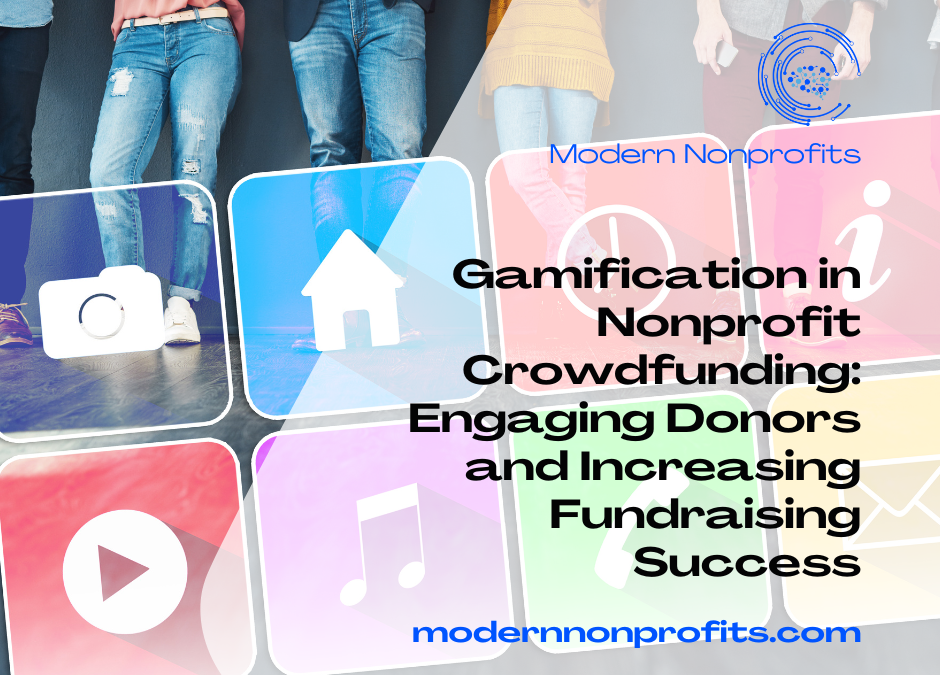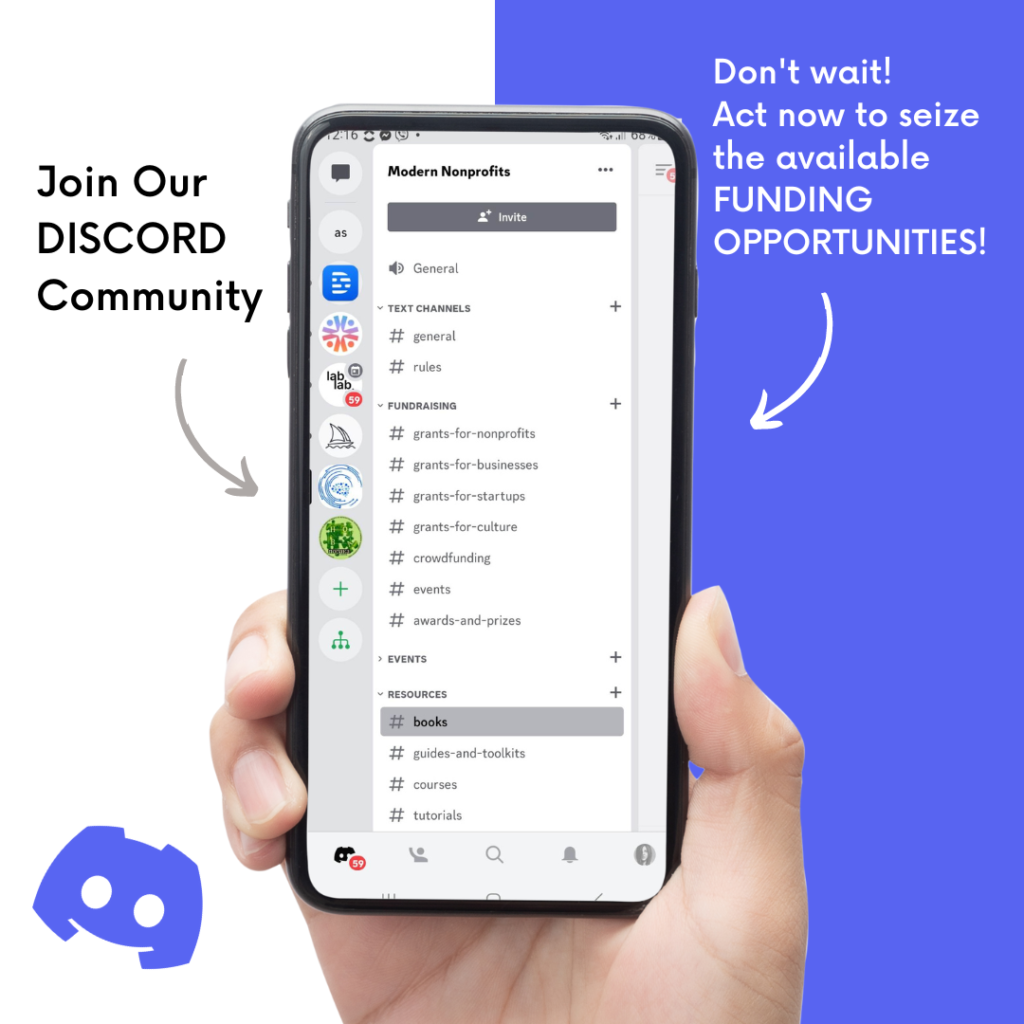Nonprofit organizations play a vital role in addressing social and environmental challenges, but fundraising can be a significant hurdle for many nonprofits. With increasing competition for donors’ attention and limited resources, nonprofits need to find innovative ways to engage potential supporters and stand out in the crowded fundraising landscape. Gamification, the process of incorporating game mechanics into non-game contexts, can be a powerful tool to attract and motivate donors to contribute to a nonprofit’s crowdfunding campaign. By creating an immersive and rewarding experience for donors, gamification can increase engagement, promote social sharing, provide real-time feedback, increase retention rates, and generate valuable data insights. In this article, we will discuss the advantages of utilizing gamification in nonprofit crowdfunding and how it can help nonprofits achieve their fundraising goals.

Nonprofit organizations rely heavily on fundraising campaigns to support their operations, but with increasing competition and limited resources, it can be challenging to stand out and engage potential donors. Gamification, the process of incorporating game mechanics into non-game contexts, can be a powerful tool to attract and motivate donors to contribute to a nonprofit’s crowdfunding campaign. In this article, we will discuss the advantages of utilizing gamification in nonprofit crowdfunding and how it can increase donor engagement and fundraising success.
- Increases Donor Engagement
Gamification can help nonprofits create an immersive experience that keeps donors engaged and motivated to contribute. By incorporating game elements such as point systems, badges, and leaderboards, nonprofits can create a sense of competition among donors and encourage them to contribute more. Additionally, gamification can create a sense of community among donors, who can interact with each other and track their progress toward common goals.
- Promotes Social Sharing
Gamification can also encourage donors to share their contributions on social media, promoting the nonprofit’s crowdfunding campaign to a wider audience. Social sharing is an essential aspect of modern fundraising, as it enables nonprofits to leverage the social networks of their donors to reach new potential supporters. By incorporating game mechanics such as achievements and rewards for social sharing, nonprofits can motivate donors to spread the word about their cause and increase their reach.
- Provides Real-time Feedback
Gamification can provide donors with real-time feedback on their contributions, which can increase their motivation to give more. For instance, nonprofits can use progress bars to show donors how much money they have raised toward their goals, providing a sense of accomplishment and satisfaction. By using feedback loops, nonprofits can keep donors engaged and motivated to contribute throughout the crowdfunding campaign.

- Increases Retention Rates
Gamification can also increase donor retention rates by creating a more engaging and rewarding experience. Nonprofits can use gamification to reward donors for their contributions, such as exclusive access to content or events. By creating a sense of exclusivity and rewarding loyal donors, nonprofits can increase retention rates and build a dedicated community of supporters.
- Generates Data Insights
Finally, gamification can provide nonprofits with valuable data insights that can inform future fundraising campaigns. By tracking donor engagement and behavior, nonprofits can identify areas of improvement and tailor their strategies to increase fundraising success. Additionally, gamification can help nonprofits identify their most valuable donors, who can be targeted with personalized fundraising appeals to maximize their contributions.
In conclusion, a gamification is a powerful tool that can help nonprofits increase donor engagement, promote social sharing, provide real-time feedback, increase retention rates, and generate valuable data insights. By incorporating game mechanics into their crowdfunding campaigns, nonprofits can create a more immersive and rewarding experience for donors, encouraging them to contribute more and support their cause. As fundraising continues to evolve, gamification is likely to become an essential aspect of successful nonprofit campaigns.

Gamification Features That Can Be Used In Nonprofit Crowdfunding
Here are some concrete examples of gamification features that can be used in nonprofit crowdfunding:
- Point system: Donors can earn points for their contributions and activities, which can be used to unlock rewards or advance in the campaign.
- Badges: Donors can earn badges for specific achievements, such as reaching a donation milestone or sharing the campaign on social media.
- Leaderboard: Donors can see how their contributions compared to other donors, creating a sense of competition and motivation.
- Progress bar: Donors can see how close the campaign is to its fundraising goal, creating a sense of urgency and excitement.
- Challenges: Donors can participate in challenges or missions, such as recruiting new donors or sharing the campaign on a specific platform, to earn rewards or advance in the campaign.
- Rewards: Donors can earn rewards for their contributions or activities, such as exclusive access to content or events, personalized thank-you messages, or merchandise.
- Social sharing: Donors can share their contributions or achievements on social media, promoting the campaign to a wider audience and earning points or badges.
These are just a few examples of gamification features that can be used in nonprofit crowdfunding. The specific features used will depend on the nonprofit’s goals and target audience, as well as the platform or tools used for the campaign.

In today’s digital age, nonprofits must find new and innovative ways to engage donors and raise funds for their cause. Gamification has proven to be a powerful tool in nonprofit crowdfunding, helping organizations increase donor engagement, promote social sharing, provide real-time feedback, increase retention rates, and generate valuable data insights. By incorporating game mechanics such as point systems, badges, leaderboards, progress bars, challenges, rewards, and social sharing, nonprofits can create an immersive and rewarding experience for donors, encouraging them to contribute more and support their cause. As nonprofits continue to navigate the challenges of fundraising, gamification is likely to become an increasingly essential aspect of successful campaigns. By embracing gamification and leveraging its benefits, nonprofits can not only achieve their fundraising goals but also build a loyal and engaged community of supporters who are invested in their cause.



Your post caught my attention and got me thinking. It opened a path for me to new opportunities in nonprofit crowdfunding. This is the first time I’ve seen this topic on your blog and I don’t think anyone has covered it before. I would like to get in touch with you and hire you to help me transform my organization into the new digital age. Thank you, great job.
Dear Mia, I am glad you liked the article. I am open to a consultation with your organization. I would like to hear more about what you do and what are the needs of your organization. Feel free to book a meeting with me so we can discuss and make a plan for improvement. We keep in touch.
Wow, what an eye opening article Anita! I had never even heard of gamification key alone considered its impact on non-profit organization’s fundraising. Just on the surface it seems as though gamification tactics should help any platform that is looking to increase engagement, which steered properly should improve multiple facets of the business or enterprise being undertaken.
Are there challenges specific to implementing this strategy in the non-profit arena or are any roadblocks pretty standard regardless of the industry they are being employed?
Hello Joseph, I am glad you liked my article. For sure there are plenty of other opportunities how to use gamification in fundraising. We just have to use our imagination and knowledge, research a little bit online, and put all that into practice. For sure there are challenges, mostly because most of the nonprofit leaders are not digitally transformed and they stick to the old way of managing the nonprofits. The resistance to learning new skills, especially digital skills is also one of the flаws of nonprofit leaders. It would be best if the nonprofit leaders open themselves to new opportunities, especially if they open new job positions, especially from the technology field, so they could add new spirit to the organization. They will for sure automatize some of the processes, which will mainly save time, build a community of donors and supporters, make use of marketing and visibility in service of the organization, and over everything include innovation in the organization in order to make it digitally transformed.
I am glad you made a post on how to engage donors and increase fundraising success.
As I said in my comment in your other post, we are planning to start a non-profit organization that aims to help the young people in our community who dropped out of school. We’re now in the process of organizing a team of 10-12 people and are looking at some strategies we can implement.
We were also able to talk with some potential donors who committed to helping us raise funds but it looks like it’s easier said than done. We have never heard of Gamification in nonprofit crowdfunding but we need all the help we can get so we would like to look into this.
Adding gamification features sounds like a brilliant idea for engaging potential donors because not only will they be able to track their progress, but they will also be encouraged to give more because they will see their contributions compare with those of the others.
Thanks for these helpful tips.
Dear Alice, I am glad you liked my article, and by blog writings in general. I would be happy to assist you in making an organizational strategy, or programs that will be a path for reaching your mission and vision. I created recently a Discord hub where I am posting open calls for funding. You can for sure find plenty of opportunities for raising funds for your ideas, which can be for nonformal groups, organizations, businesses or startups. You can check my post for Discord and feel free to join my spaces. https://modernnonprofits.com/beyond-social-media-leveraging-discord-for-nonprofit-community-building-and-engagement/ I am welcoming you to book a free meeting with me so I can share some tips with you. Happy to hear from you.